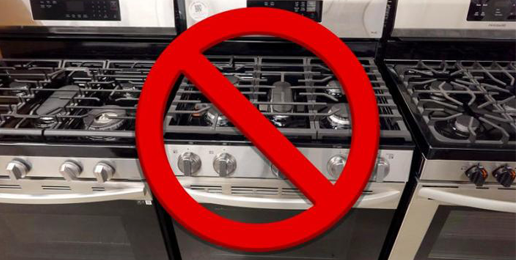
The Consumer Product Safety Commission (CPSC) recently announced that indoor gas stoves emitted harmful pollution. Several studies claim that the use of gas can cause respiratory illness. The CPSC is considering restrictions on gas stoves, including possible bans in new residential construction. But attacks on gas stoves are based on questionable science and are largely driven by concerns not related to health.
The CPSC has reportedly been considering actions on gas stoves since October. Richard Trumpka, Jr., a CPSC commissioner, stated “This is a hidden hazard. Any option is on the table. Products that can’t be made safe can be banned.” Two recent studies figure prominently in agency concerns. The first, published in January last year by Eric Lebel and others, found that gas stoves and ovens emit hazardous levels of methane and nitrogen dioxide (NO2). The second, published in December last year by Talor Gruenwald and others, estimated that 12.7 percent of childhood asthma cases in the US were due to gas stove use.
Nitrous oxide (NO) is produced at combustion temperatures above 1,600oC by breaking down nitrogen molecules in air. Modern stove burner flames reach temperatures above 1,600oC, producing NO. The nitrous oxide then combines with oxygen to form nitrogen dioxide, a pollutant. But the amount of NO2 generated by stoves is very small, only parts per billion (ppb) levels.
The Lebel study measured nitrogen dioxide levels of 100 ppb in kitchens, but this was after sealing the room in plastic—an unrealistic artificial condition. Other studies find NO2 levels to be as high as 34 ppb after several hours of stove and oven use. This level is below the 53 ppb limit of the National Ambient Air Quality Standard of the Environmental Protection Agency. The EPA states that, for NO2 levels below 50 ppb, “No health impacts are expected for air quality in this range.” Most studies do not find hazardous levels of NO2 from stove use.
Nevertheless, the Gruenwald study claims that nitrogen dioxide from gas stoves is linked to asthma in children. It used statistical analysis to find an association between stoves and childhood asthma in the U.S. But the study itself states that it reviewed 27 other studies connected to gas stoves and none reported “associations between gas stove use and childhood asthma.” In addition, the Centers for Disease Control reports that asthma attacks and asthma hospitalizations for US children have been declining since 2001, while U.S. natural gas consumption rose 38 percent over the same period.
Could it be that health concerns about gas stoves are a proxy for a larger issue? For more than a decade, environmentalists have promoted “electrification” of homes. Historically, the term “electrification” meant extending the electrical grid to rural areas and homes without electricity. But the renewable energy movement redefined electrification to mean electrify everything. As they see it, electrification of homes means replacement of gas stoves, furnaces, water heaters, and even propane grills with electric appliances. They say this is needed to reduce greenhouse gas emissions and solve the problem of human-caused climate change.
Talor Gruenwald, the lead author of the study on childhood asthma in the U.S., is employed by the Rocky Mountain Institute, which also funded the study. For three decades, the institute has been working on programs to counter global warming. Eric Lebel is a researcher at Stanford University, with articles on methane emissions from oil and gas wells, gas water heaters, and gas stoves. His goal appears to be to counter global warming through electrification of homes by claiming harmful health effects from gas appliances.
Netherlands and the United Kingdom now urge their residents to replace gas appliances with electric appliances and heat pumps as part of programs to reach net-zero emissions. These policies were adopted even though 92 percent of homes in Netherlands use gas heat and 78 percent of homes in the U.K. use gas. The Netherlands aims to disconnect gas lines from eight million homes by 2050.
An electrification battle rages in the United States. Cities in seven states—California, Colorado, Massachusetts, New York, Oregon, Vermont, and Washington—have established bans on gas appliances in new construction. But in opposition, 19 other states recently enacted laws preventing local governments from banning natural gas and propane, or “impairing a consumer’s ability to choose a utility service.” Another four states have proposed legislation that would prohibit bans by local governments.
Residents pay significantly more in utility bills with electric appliances. For example, in 2020 the average price of residential natural gas in California was $13.64 per million British Thermal Units (BTU). For a new 95-percent-efficiency natural-gas furnace or water heater, this translates to a cost of just over $14 per million Btu. California’s 2020 residential electricity price was 20.51 cents per kWh, or a cost of $60.11 per million Btu. California residents can pay over four times as much to operate electric stoves, water heaters, or electric baseboard heat, compared to gas appliances.
Banning gas stoves will raise homeowner costs and reduce choices, without a tangible improvement in health.
This article was originally published in Washington Examiner.
































